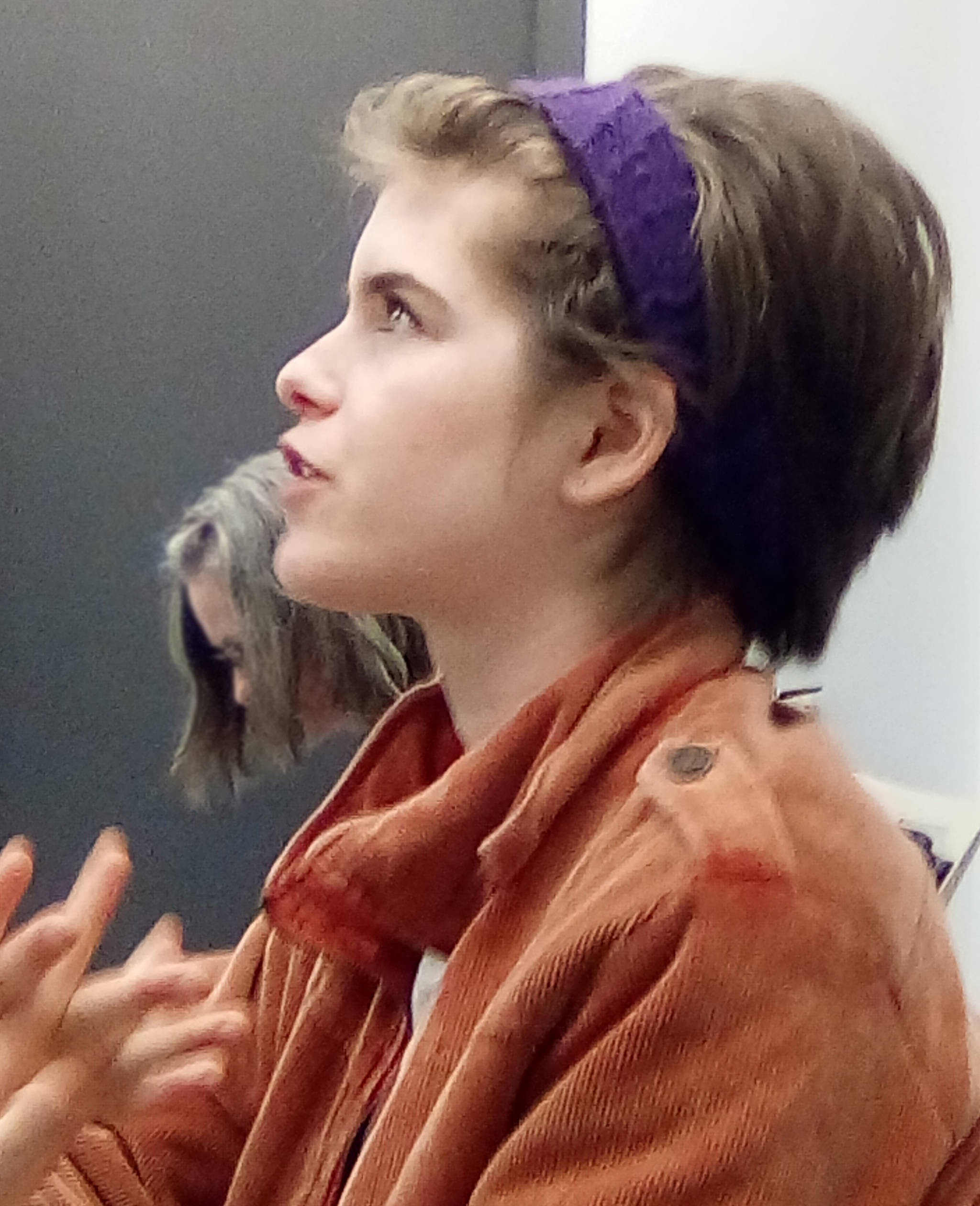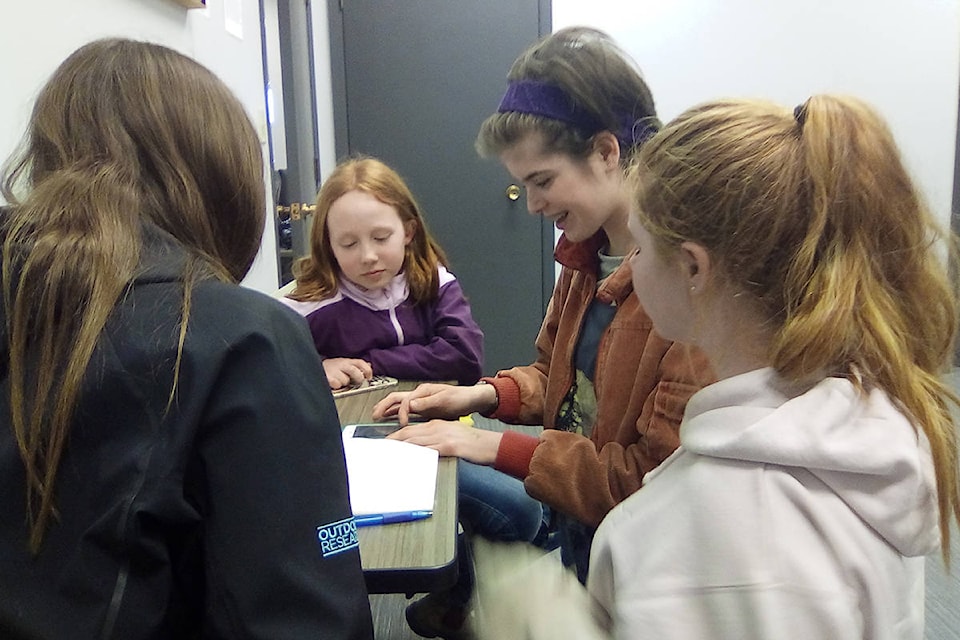Rossland and other local schools may see more protests about climate change over the coming weeks.
And the city’s youth will be taking part in a national student’s strike on May 3.
Those plans were made after one of the teens organizing local climate strikes in B.C. came to the city to meet with interested youth about the issue.
“Adults aren’t taking the action they need to, so we have to set an example of what urgency looks like,” Rebecca Hamilton told a handful of youths at a meeting at the library during spring break.
“By temporarily putting our normal lives on hold, we’re setting an example of urgency. We are prioritizing this. And we have to see all levels of government prioritizing climate action as we do, when we strike.”
Hamilton, 16, is one of the organizers of the climate strikes held by students in Vancouver since December.
Travelling with her parents to the Kootenays for spring break skiing, she took time off while in Nelson and Rossland to meet with other youths worried about climate change.
While much of the meeting was just about making initial contact with local protesters, and talking about ways to engage more students in the movement, Hamilton did say youths urgently wanted to see action on the issue.,
“This is all pretty terrible stuff, like, thinking about the end of civilization and about everything you love literally burning,” she said to the pre-teens that showed up for the meeting. “So it’s important to talk with your friends about how it makes you feel, and acknowledge that it’s really terrifying.
“And it’s not something we can just talk about, we have to take action.”
Some Rossland youths walked out of classes in March to protest the lack of serious government action on climate issues, with encouragement coming from local teachers. With Hamilton’s visit, the students learned they were part of a much bigger protest.
SEE: Rossland students strike for climate
“It is a really powerful thing to be part of, you are part of an international movement now,” she told them. “Thousands of students across Canada, millions around the world, and it is really exciting.”
The few who attended the library meeting signed up to participate in a national online chat to help plan and co-ordinate action across the country, and shared ideas on how to promote the national school strike.
“You can use music, and art, to get people excited,” said Hamilton. “You can have weekly in-school protests leading up to May 3. Hold face-painting sessions, wear green, or have sign-painting meetings.”
She says the students striking on May 3 plan to demand all three political parties reveal their strategies for dealing climate change and will use those plans to judge the parties at this fall’s federal election.
Not all the plans are disruptive to schooling. Hamilton encouraged the students to work with their teachers to promote climate action. She said English classes could have letter-writing campaigns, to send messages to politicians calling on them to act on climate change.
“It is hard because there is so much that needs fixing, that it’s easy to feel overwhelmed, but at some point you have to make decisions to narrow it down,” she said.
“So I have learned do do whatever is exciting to you. There’s no blanket solution, no best solution, no silver bullet; everybody needs to do their own thing. Everyone needs to be doing something, so whatever you are best at, is what you’ll enjoy doing most.”
The message wasn’t lost on 12-year-old Olivia Kivell, a student at RSS.
“I feel climate change is a very important issue. I have to live in this world and it is kind of my responsibility to take action, to have a better world to live in when I am older,” she says.
She said her fellow students — and teachers — are on board with climate activism.
“Our whole class is pretty excited to have a part in this, especially because of our teacher,” she said. “She is very enthusiastic, she had us write a speech of our own.”
But she also admitted it was tough sometimes getting other youths involved. She said her younger brother preferred to play with friends that day than come to the meeting. And she said teenagers just thought they were too cool to participate.
And then there are the adults.
“My mom is kind of like, ‘I don’t know.’ She doesn’t want me to strike because she says it’s sort of like skipping school,” she says. “So I think a big thing adults can do is understand that this is our climate, and we want to take action for it.
“Our teachers are from Rossland, and they like skiing and mountain biking, things like that, so that could be a factor [to encourage them], protecting their hometown.”
Hamilton offers this message explaining the purpose of a student climate strike.
“We are not just missing school. So many young activists are sacrificing so much time and so much to devote themselves to this, and that it is unfair: we shouldn’t have to be at this place where we are putting aside our adolescence to save the future of civilization. So it’s not about missing school.”
And Hamilton encouraged the youths who showed up to the meeting not to be discouraged when they’re working by themselves.
“Even if you are alone right now, people notice what choices you make,” she said. “People will notice your passion and you will inspire others so much.”
“What you do radiates to everyone around you.”

